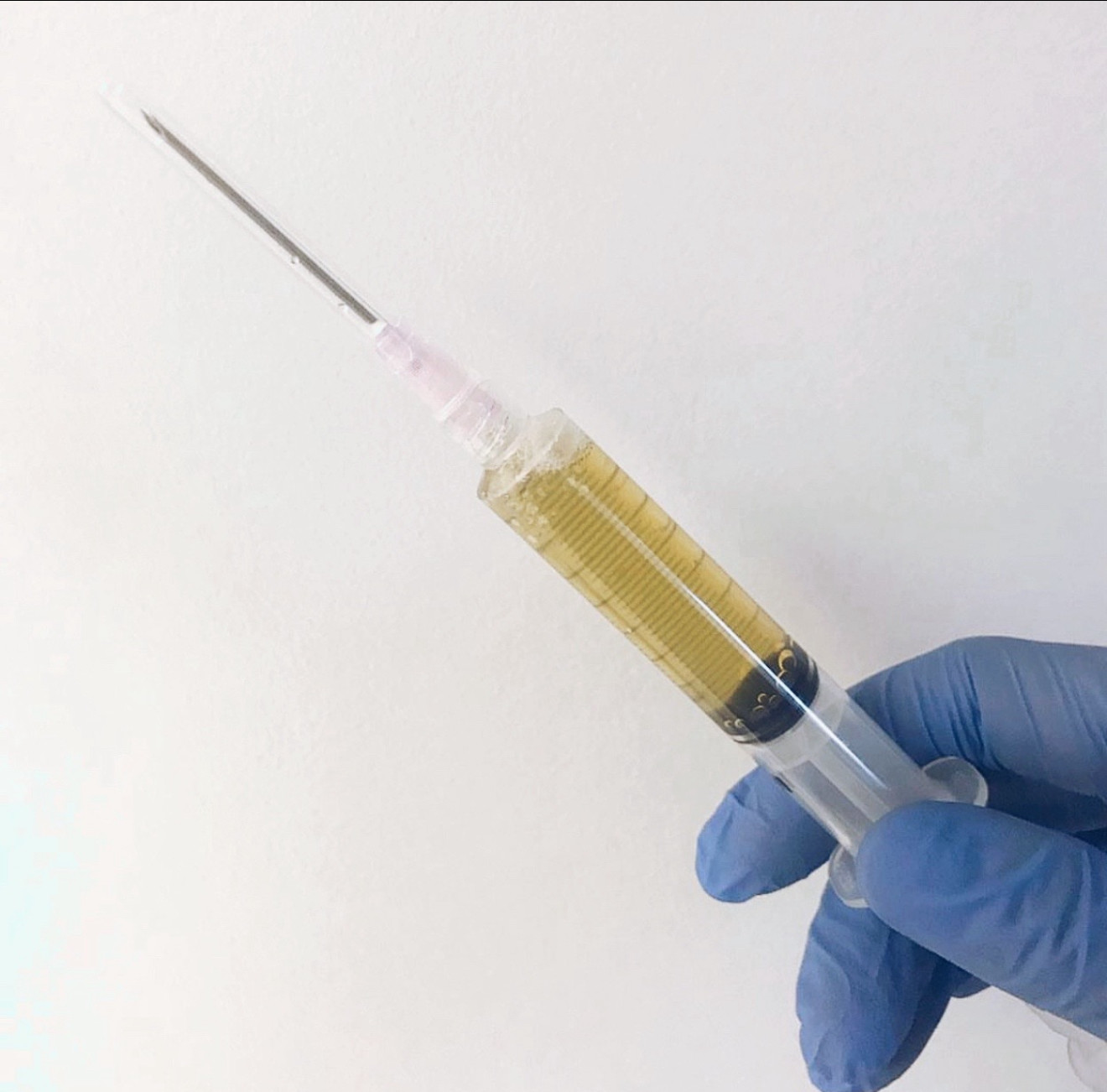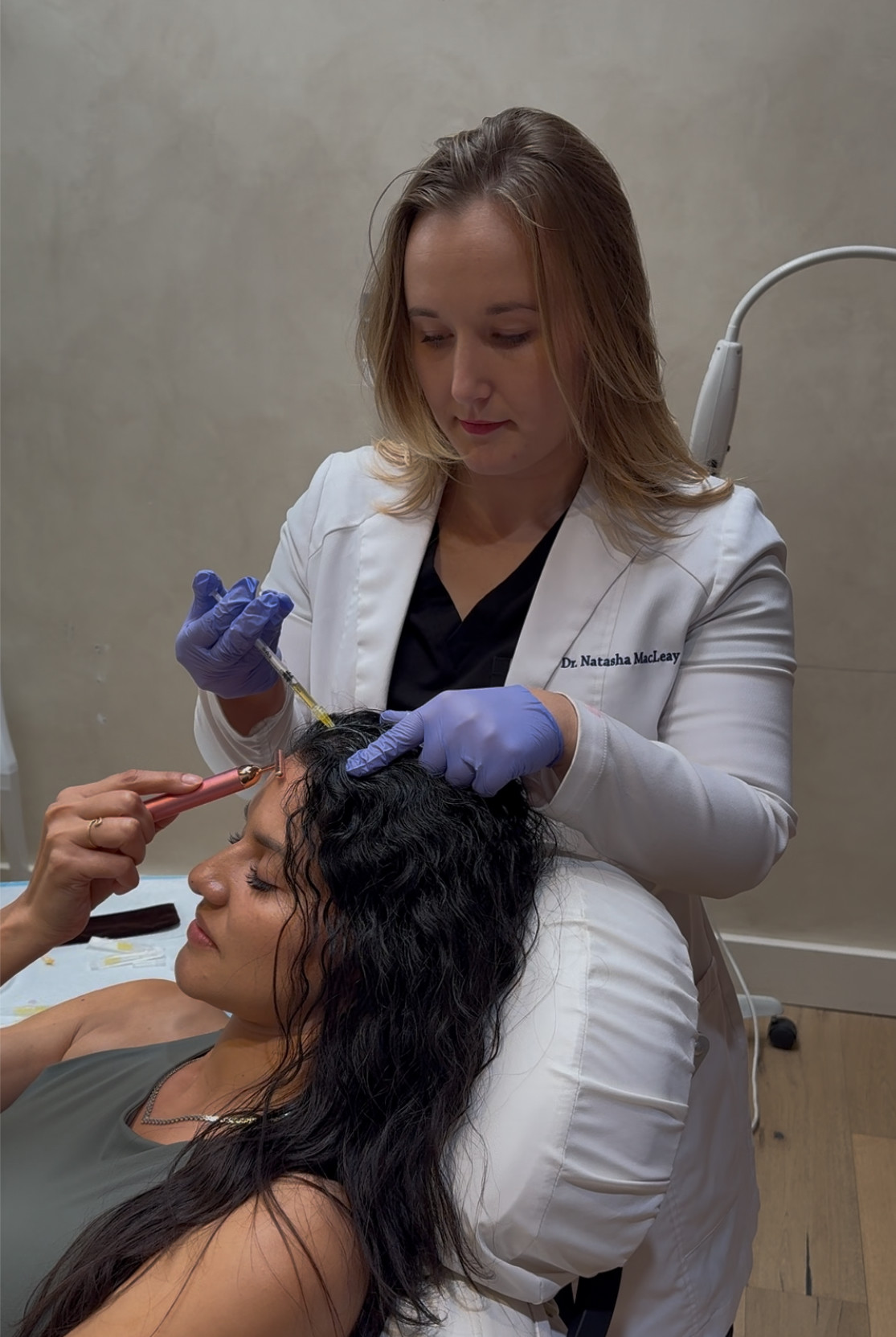PRP Hair Injections
PRP Hair Growth Explained
PRP Hair Restoration: Revitalizing Your Hair Naturally
Hair loss can be a distressing experience for many individuals, impacting self-confidence and overall well-being. Platelet-Rich Plasma (PRP) therapy has emerged as a popular non-surgical treatment option for hair restoration, offering hope to those seeking natural solutions to stimulate hair growth. This article explores the basics of PRP hair restoration, how it works, its potential benefits, what to expect during treatment, and considerations for individuals considering this innovative approach. PRP is one of our many regenerative medicine modalities we use at Tusli Wellness Club.
Understanding PRP Hair Restoration
Platelet-Rich Plasma (PRP) therapy for hair restoration involves using the patient's own blood plasma, enriched with platelets, to promote hair growth and thicken existing hair. PRP contains growth factors and proteins that stimulate hair follicles, improve blood circulation to the scalp, and support the natural hair growth cycle.

How PRP Works for Hair Restoration
-
Blood Collection: A small amount of blood is drawn from the patient, typically from the arm.
-
Centrifugation: The blood is processed in a centrifuge machine to separate the plasma, which is rich in platelets and growth factors, from other blood components.
-
Preparation: The concentrated PRP solution is prepared for injection into the scalp.
-
Injection: Using a fine needle, the PRP solution is strategically injected into the scalp in areas experiencing hair thinning or loss.

Conditions Treated with PRP Hair Restoration
PRP therapy is beneficial for various types of hair loss, including:
- Androgenetic Alopecia: Common genetic hair loss patterns in both men and women.
- Alopecia Areata: Autoimmune condition causing patchy hair loss.
- Hair Thinning: Due to aging, hormonal changes, or stress-related factors.
PRP therapy is suitable for individuals in the early stages of hair loss or those experiencing hair thinning.

Benefits of PRP Hair Restoration
Natural Hair Growth Stimulant
PRP therapy harnesses the body's natural healing mechanisms to promote hair growth. The growth factors and proteins in PRP stimulate dormant hair follicles, prolong the growth phase (anagen phase) of hair, and improve hair density and thickness.
Non-Surgical and Minimally Invasive
Unlike surgical hair restoration procedures, such as hair transplants, PRP therapy is non-surgical and minimally invasive. It involves minimal discomfort and downtime, making it a convenient option for individuals seeking hair restoration treatments.
Safe and Well-Tolerated
PRP therapy uses the patient's own blood, reducing the risk of allergic reactions or rejection. The procedure is performed in a sterile environment under the supervision of a qualified healthcare provider, ensuring safety and efficacy.
What to Expect During PRP Hair Restoration Treatment
Initial Consultation
During your initial consultation, your healthcare provider will evaluate your medical history, conduct a scalp examination, and discuss your expectations and goals for hair restoration.
Treatment Sessions
PRP therapy typically involves a series of sessions spaced several weeks apart. The number of sessions may vary depending on the extent of hair loss and individual response to treatment.
Procedure Duration
Each PRP session generally takes about 30-60 minutes, including blood collection, centrifugation, and injection. You can resume normal activities immediately following treatment.
Post-Treatment Care
After PRP injection, you may experience mild redness, swelling, or tenderness at the injection sites. These side effects are usually temporary and resolve within a few days. Your healthcare provider may recommend gentle scalp care and avoid washing hair for a specified period after treatment.

Considerations for PRP Hair Restoration
Candidate Eligibility
PRP therapy for hair restoration is suitable for individuals in good overall health experiencing early signs of hair loss or hair thinning. It may not be effective for advanced stages of balding or scarring alopecia.
Realistic Expectations
While PRP therapy can stimulate hair growth and improve hair density, results may vary among individuals. It's essential to have realistic expectations and discuss potential outcomes with your healthcare provider.
Complementary Treatments
Combining PRP therapy with other hair restoration treatments, such as topical medications or laser therapy, may enhance results and support long-term hair health.
Integrating PRP Therapy into Your Hair Care Routine
Healthy Lifestyle Habits
Maintaining a balanced diet, staying hydrated, and managing stress can promote overall hair health and support the effectiveness of PRP therapy.
Regular Follow-Up
Regular follow-up appointments with your healthcare provider allow for monitoring progress, adjusting treatment as needed, and addressing any concerns or questions.
Patience and Persistence
Hair growth is a gradual process, and results from PRP therapy may become noticeable over several months. Patience and consistency with treatment sessions are key to achieving optimal outcomes.
Areas We Serve
San Diego - Del Mar, Encinitas, Solano Beach, Carmel Valley, Rancho Santa Fe, La Jolla, Cardiff, Carlsbad, Fairbanks Ranch, Mira Mesa, Miramar, University City, Rancho Penasuitos, Pacific Beach, 4S Ranch, San Marcos, Oceanside
Conclusion
In conclusion, PRP therapy for hair restoration offers a promising solution for individuals seeking natural approaches to combat hair loss and improve hair density. By leveraging the body's healing mechanisms, PRP therapy stimulates hair follicles, promotes hair growth, and enhances overall scalp health.
Reflecting on the principles and benefits of PRP therapy, it's evident that this treatment modality continues to gain recognition and acceptance within the field of dermatology and aesthetic medicine. Whether you're experiencing early signs of hair thinning or seeking to enhance hair density, exploring PRP therapy with a qualified healthcare provider can provide valuable insights and personalized care.
If you're considering PRP therapy for hair restoration, take proactive steps to learn more about its potential benefits, discuss your options with a healthcare provider, and embark on a journey towards revitalizing your hair naturally. Embrace the opportunity to restore confidence and embrace healthier hair with PRP therapy.
